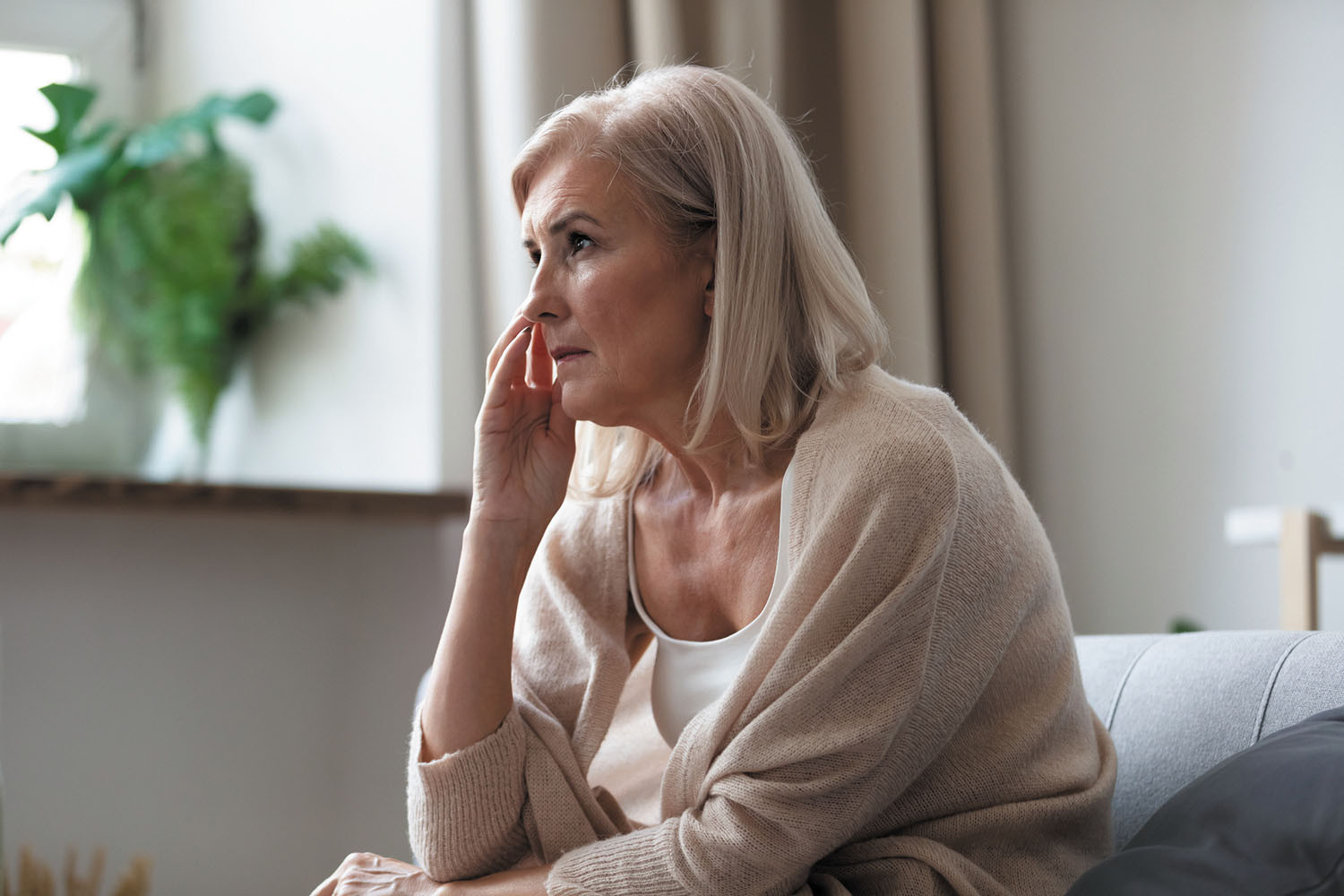The pain gap
Scientists are still teasing out why women deal with more chronic pain than men. In the meantime, here's how to find the help you need.
- Reviewed by Toni Golen, MD, Editor in Chief, Harvard Women's Health Watch; Editorial Advisory Board Member, Harvard Health Publishing; Contributor, and
- Hope Ricciotti, MD, Editor at Large, Harvard Women's Health Watch

When you're hurting, you want to know why — especially when pain returns day after day. So the frustration is real when a diagnosis is elusive, piling on to a cryptic but persistent gender gap in chronic pain.
The lopsided prevalence of chronic pain between the sexes has long been recognized. Women deal with the problem at rates 6% higher than in men. That's true for back, hip, and knee pain; migraine headaches; arthritis; lupus; and fibromyalgia, among other problems. And some chronic pain conditions strike only women, such as endometriosis; the bladder condition interstitial cystitis; vulvodynia (which affects the vulva); and pelvic girdle syndrome, which involves pain around the pelvic joints and lower back.
What's still not clear is why. "We know this disparity exists, but the question is what drives it," says Dr. Christopher Gilligan, chief of the Division of Pain Medicine at Harvard-affiliated Brigham and Women's Hospital.
Estrogen's role
Evidence suggests that hormones are one contributing factor. A new study found that women who got their first period (a time known as menarche) at a younger age are more likely to have chronic pain in adulthood. The analysis, published in September 2022 in the journal Pain, evaluated data on more than 12,000 women (average age 55). Across the full range of reported ages at menarche — 9 through 18 — the risk of chronic pain dropped 2% for each one-year delay in menstruation.
The findings add to earlier evidence suggesting exposure to increased estrogen levels from early menstruation may contribute to pain — and to overall sex differences in pain, the study authors said. Even so, genes and other biological factors may also be responsible.
Paths to pain relief
Adding to the burden of chronic pain is the difficulty many women have getting a firm diagnosis. This can delay effective treatment. Dr. Gilligan offers these strategies to get the help you may need:
Be persistent. If your primary care doctor can't pinpoint a cause for your pain, ask for a recommendation or referral to another medical professional. "Also, if you feel you're not being listened to, seek a second or third opinion until you find a provider who does," he adds.
Stay flexible. Before turning to medications, be open to trying different treatment approaches, including physical or occupational therapy.
Consider CBT. Cognitive behavioral therapy can help alter your perception of pain and teach you coping skills.
Seek support. Online and in-person support groups can link you to others who share their pain relief strategies. Additionally, some hospitals offer so-called functional restoration programs — rehabilitation programs for chronic pain sufferers — that involve group support.
Image: © fizkes/Getty Images
About the Author

Maureen Salamon, Executive Editor, Harvard Women's Health Watch
About the Reviewers

Toni Golen, MD, Editor in Chief, Harvard Women's Health Watch; Editorial Advisory Board Member, Harvard Health Publishing; Contributor

Hope Ricciotti, MD, Editor at Large, Harvard Women's Health Watch
Disclaimer:
As a service to our readers, Harvard Health Publishing provides access to our library of archived content. Please note the date of last review or update on all articles.
No content on this site, regardless of date, should ever be used as a substitute for direct medical advice from your doctor or other qualified clinician.
















